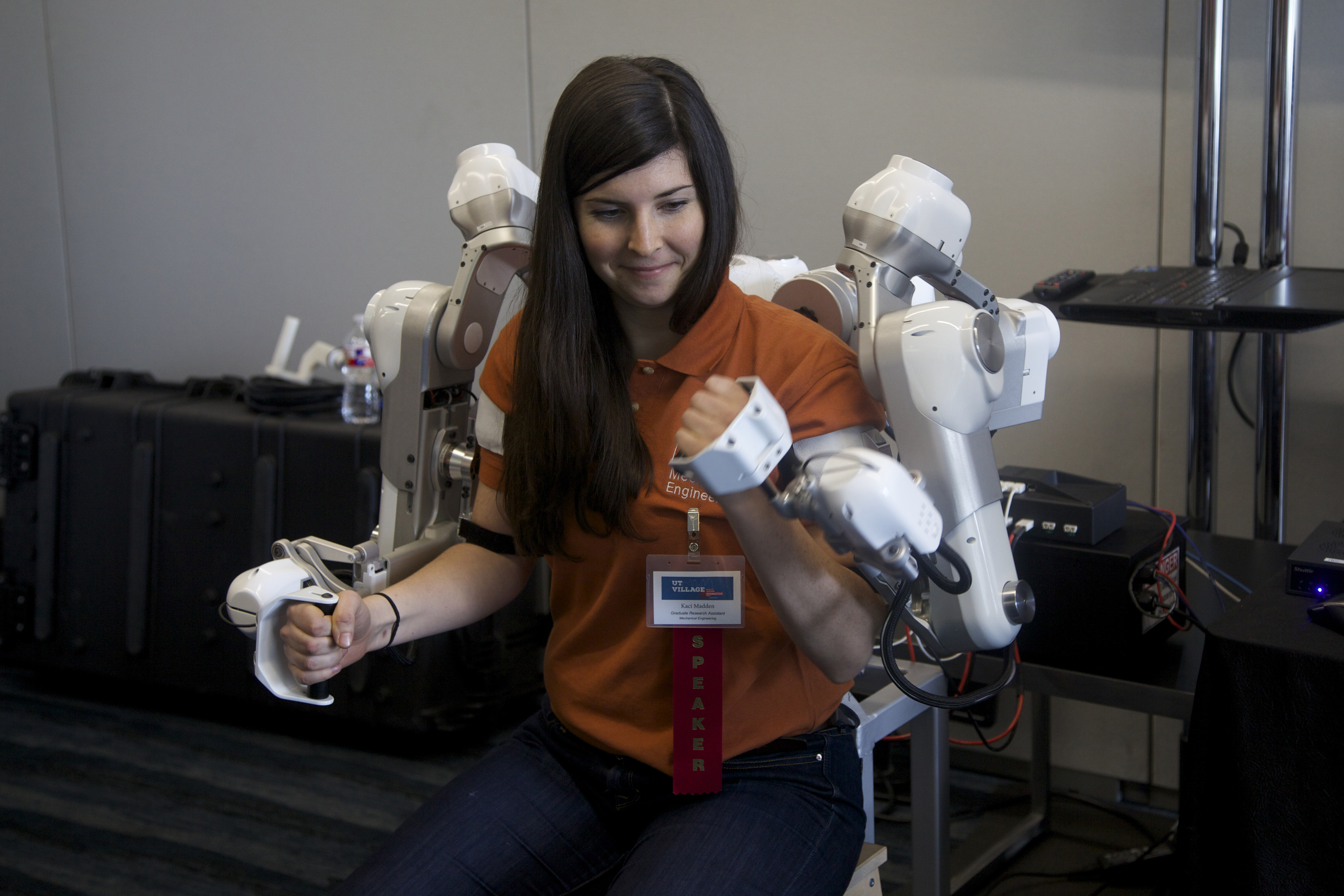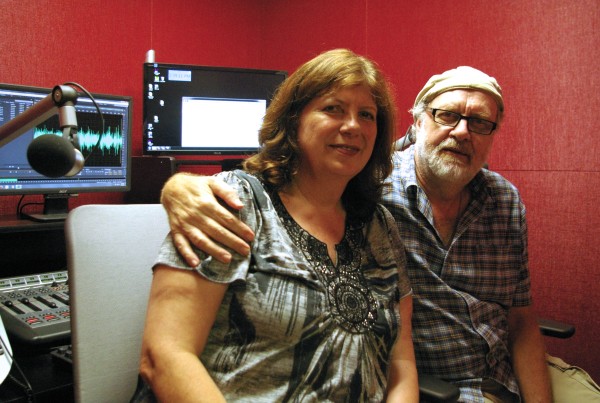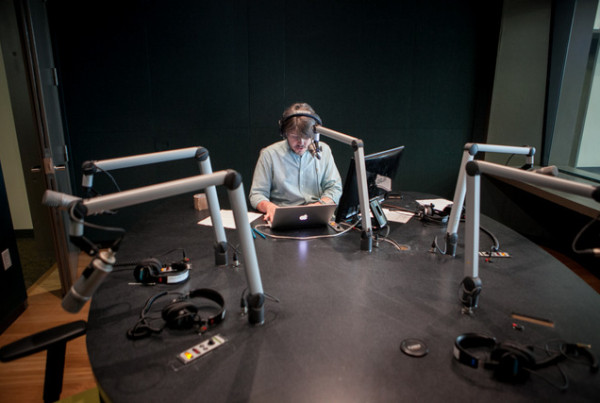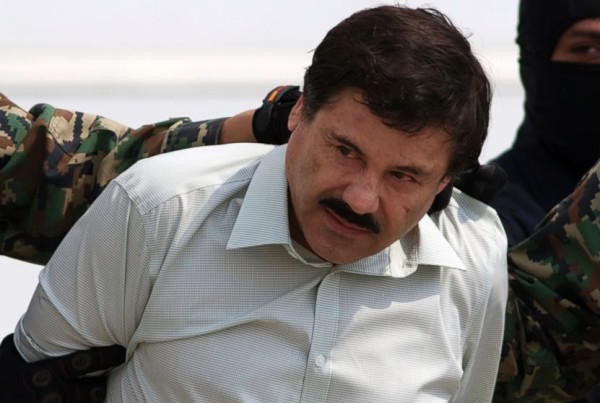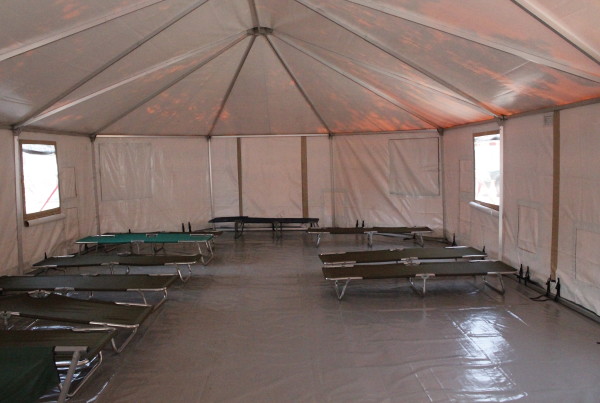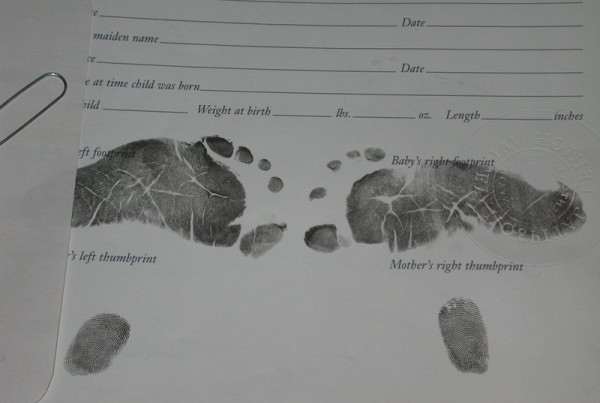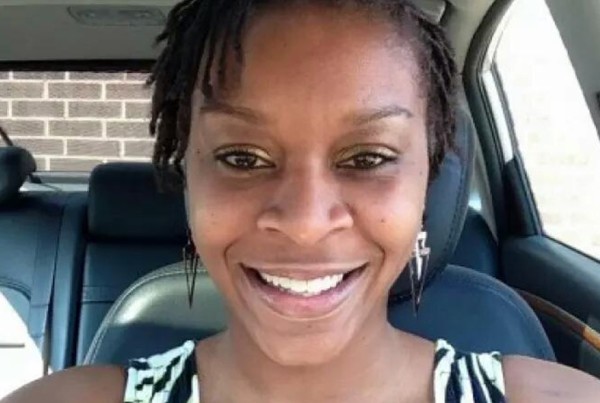HARMONY looks like a robot without a head – just arms and a torso.
“So this is HARMONY – a bimanual exoskeleton for the upper body. Bimanual meaning that it’s wrapped around both sides of the body. It wraps around your shoulder and your elbow and your arms,” Dr. Ashish Deshpande says.
Deshpande developed HARMONY with a crew of University Texas at Austin students. It’s been in the design and building process for the past five years – but now it’s been built in full form.
The motion it’s making sort of looks like it’s asking for a hug but what it’s really doing is its job – which, when a patient is connected, is to help them move through upper body physical therapy exercises.
“It has enough power to move you even when you are not able to move your own body,” Deshpande says.
If you’re starting to immediately envision scenes from sci-fi movies… you’re in good company.
Deshpande says Harmony works a lot like Iron Man’s suit. In fact, in the lab where he works with his team – there’s a framed screen shot of Robert Downey Jr. from one of the Iron Man films. There’s also a photo of Arnold Schwarzenegger looking at his robotic Terminator hand. But there’s one big difference here… and it’s not the absence of movie stars.
“So this is not to enhance power to do sort of super-human activities – the main purpose is to help people move who cannot move,” Deshpande says.
“It may sound trivial – wiping your face or feeding yourself – so what. But when you can’t do much of anything, anything that you can do becomes monumentally important,” Rehab specialist Dr. Roger Parthasarathy says.
Parthasarathy sees patients struggling with simple tasks all the time at the Seton Brain & Spine Institute in Central Texas.
“It’s very humbling when you’re with a person with a spinal cord injury – particularly if they have an upper cervical injury where they can’t use their arms very much or maybe not at all. Something as simple as having a fly landing on your face and not being able to do anything about it,” Parthasarathy says.
Dr. Deshpande says HARMONY can fill a gap in the treatment of these patients – on three levels:
“Just movement itself helps at the joints level and then it helps at the muscle level as well,” Deshpande says. “But then what we want to get at is actually the brain level – or the neural level. So if you had a stroke, you’d want to exploit what’s called brain plasticity – so that’s the ability of the brain to recover some function. And to achieve that you want to move the body in the right fashion.”
That part about helping the brain re-learn is especially interesting because researchers are still learning how that works– and HARMONY could help.
Dr. Parthasarathy thinks this technology could eventually decrease healthcare costs by providing access to care in rural areas without a dedicated physical therapy staff – or even in a patient’s home. He thinks HARMONY could help with all kinds of issues.
“It clearly has muscular-skeletal applications – someone with a shoulder replacement or orthopedic injury. It very well may have some implications for sports rehabilitation after an injury or perhaps even sports enhancement.”
You heard right – so though HARMONY wasn’t designed to give you the strength of an Iron Man or Terminator – it could help you build that up. But before you start thinking about a sci-fi disaster, remember this:
“So the red button is what you’d expect it to do – which is the emergency stop,” Deshpande says. “You’ll notice there are two of these. So one is with the operator and one is with the subject so if at any point you don’t feel comfortable, you can safely stop the robot.”
The researchers are conducting testing on healthy subjects now and are signing up those with stroke or spinal cord injuries.
If you or someone you know wants to sign up for the studies, contact Dr. Deshpande and/or Dr. Parthasarathy.


